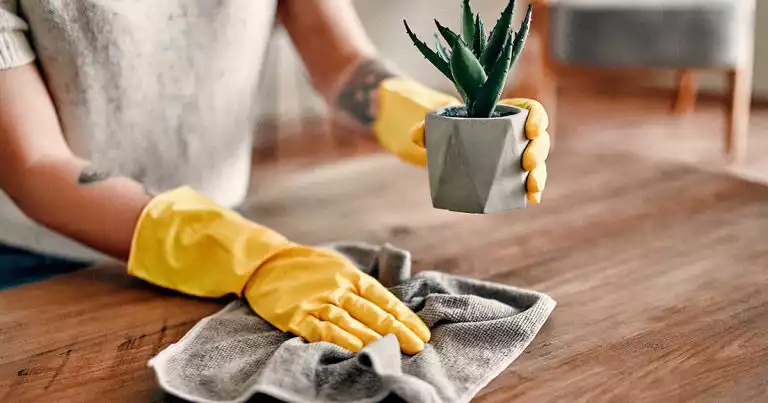What Is Dust Made Of? And How To Manage It For A Clean Home
2 minute read
Click the play button to listen to the What Is Dust Made Of? And How To Manage It For A Clean Home article.
Anywhere you look around your home, you’re bound to see dust. From the coffee table in the living room to the shelves in your bedroom, all home surfaces require some regular cleaning to get rid of dust and the allergies often associated with it.
But beyond being unsightly, what is it exactly? And what are the risks?
Dust is commonly made up of the following (skip this section if you’re a bit squeamish):
- Dead skin cells
- Hair from humans and pets
- Clothing fibers
- Dust mites
- Soil particles
- Pollen
- Microscopic specks of plastic
Additionally, all of these particles can also serve as hosts for other harmful things like air pollutants, bacteria, chemicals, and metals. These substances attach themselves to dust particles, which can make it easier for them to be inhaled.
Dangers Of Dust Inhalation
It’s not just an eyesore—dust can also be harmful to your health in large quantities. Here’s why:
Airways can filter out many of the harmful substances from the air we breathe, and lungs are self-cleaning organs that can heal once they’re no longer exposed to pollutants.
But if the body is constantly breathing in dust, it can add up to serious problems down the road. That problem has been seen for years in workers who are consistently exposed. Pneumoconiosis is a lung disease that affects millions of people who work in conditions that aren’t properly ventilated. It’s typically caused by inhaling asbestos fibers or silica/coal mine dust.
But you can be impacted even if you don’t work around it every day. Signs of excessive short-term dust inhalation include shortness of breath, coughing more than usual, and excess mucus. Over the long term, this can lead to inflammation, scarring, and one of several lung diseases. Dust inhalation can also exacerbate existing conditions like COPD and asthma.
How To Reduce Dust In Your Home
Now that many people are spending more time at home than ever before, it’s important to ensure the air you breathe there is as healthy as possible. Here are some strategies to consider:
House Rules
Dust accumulates faster when more particles are brought in from the outdoors. Try removing shoes before coming in the house, or have a rug for people to brush off their shoes with. You can also make sure windows and doors are sealed properly, to avoid small holes where dust can enter.
Vacuum Regularly
A good rule of thumb is to vacuum all floors once a week. You can increase the frequency in high-traffic areas like the entryway and living room. Some homes could benefit from a robotic vacuum that automatically takes care of cleaning on a regular schedule.
Air Filtration
In addition to removing things like viruses and pollen, air filtration systems will make a huge difference in your home. By filtering the air that’s entering and removing stale air, an AprilAire ventilation system with air filters can help prevent allergy triggers. Use an AprilAire MERV 16 filter for maximum performance in your home.
